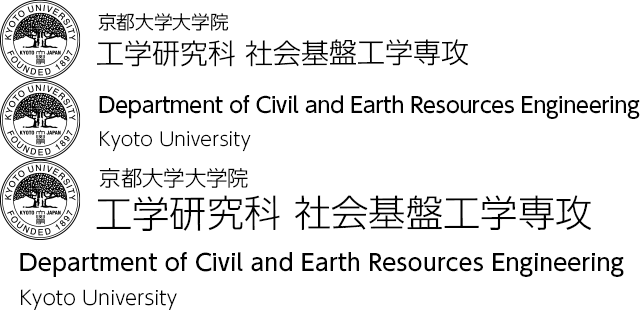Environmental Hydrodynamics
An understanding of systems related to multiphase turbulent flow, sand particle motion, and movable bed boundaries is important for the investigation of sediment transport mechanisms in river/coastal morphodynamics. In the laboratory of environmental hydrodynamics, both multiphase turbulent flow measurements and multiphase flow simulations were conducted to address the fluidized bed dynamics at the fluid-solid interface of a movable bed surface. Fundamental investigations into the prediction of crowd dynamics using granular models have also been developed in analogy with discrete particulate flow.
Academic Staff
Eiji HARADA
 Professor (Graduate School of Engineering)
Professor (Graduate School of Engineering)
Research Topics
Sediment transport mechanisms are investigated from the movable bed particle scale using both turbulence measurements in hydraulic experiments and simulations for solid-liquid multiphase turbulent flows. As a support tool for predicting crowd evacuation behavior under inundated conditions, development of a crowd evacuation simulator using Lagrangian description is also addressed.
Contacts
Room 255, Bldg. C1, Katsura Campus
TEL: +81-75-383-3185
FAX: +81-75-383-3185
E-mail: harada![]() particle.kuciv.kyoto-u.ac.jp
particle.kuciv.kyoto-u.ac.jp
http://particle.kuciv.kyoto-u.ac.jp/eindex.html
Shinichiro ONDA
 Associate Professor (Graduate School of Engineering)
Associate Professor (Graduate School of Engineering)
Research Topics
Development of numerical models, which can simulate flows and bed variations in river basins effectively, and its application. Current research is based on the following subjects.
- Flows in curved channel
- Development processes of micro scale sand waves and flow resistance
- Local scour around river structures
- Sloshing in storage tanks
Contacts
Room 256, Bldg. C1, Katsura Campus
TEL: +81-75-383-3187
E-mail: onda.shinichiro.2e kyoto-u.ac.jp
kyoto-u.ac.jp
Takumi TAZAKI
Assistant Professor (Graduate School of Engineering)
 Research Topics
Research Topics
The sediment transport mechanism in surf and swash zones is elucidated from the spatial scale of individual sediment grains with turbulence measurements in experiments and solid-liquid multiphase simulations. The main research topic is to investigate mechanisms of sediment motions and ripple formations induced by complex free surfaces in surf and swash zones by using particle methods, which have significant advantages in simulations of breaking waves.
Contacts
Room 254, Bldg. C1, Katsura Campus
TEL: +81-75-383-3186
E-mail: tazaki![]() particle.kuciv.kyoto-u.ac.jp
particle.kuciv.kyoto-u.ac.jp
http://particle.kuciv.kyoto-u.ac.jp/
Research Topics
Numerical simulation for sediment transport
The motion of sand particles forming the beds of rivers and coasts is strongly influenced by the surrounding flow, creating a solid-liquid multiphase turbulent flow with changes in the particle configurations and porosity in the surface layer of the movable bed. To investigate the fluidized mechanism of a movable bed at the particle scale, which is the minimum component of a movable bed, our laboratory uses a granular material model to track individual sand particle motions.
Measurement of multiphase turbulent flow
Information on turbulent flow in the vicinity of the beds is crucial for understanding the transport mechanism of sand particles in movable beds. In our laboratory, basic hydraulic experiments are carried out alongside numerical simulations and focus on measurements using PIV to enhance the understanding of multiphase turbulent flows.
Development of numerical model for river flow and riverbed deformation
We are conducting hydraulic experiments and developing numerical models to understand flows and sediment transport in rivers, which is necessary for river planning and sustainable management, such as prediction of water levels during floods, understanding the flow structure of open channels, prediction of scouring depth in river bends and around river hydraulic structures, and predicting morphological changes.
